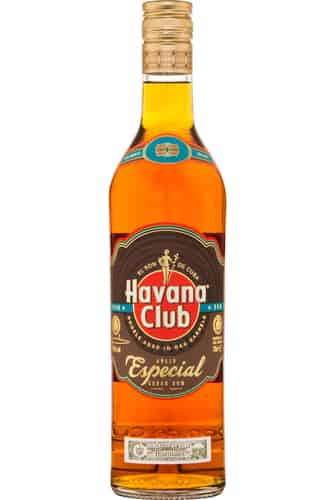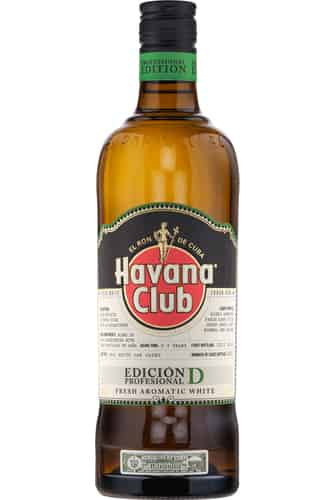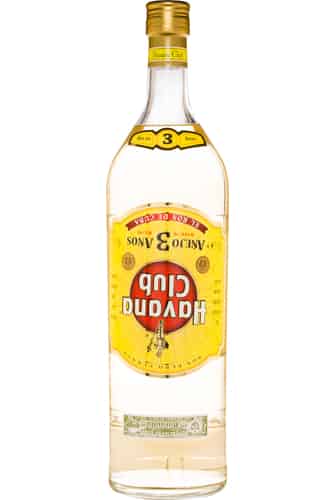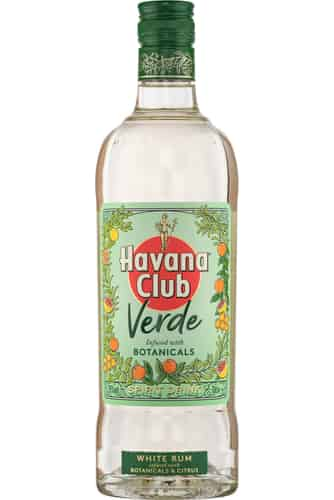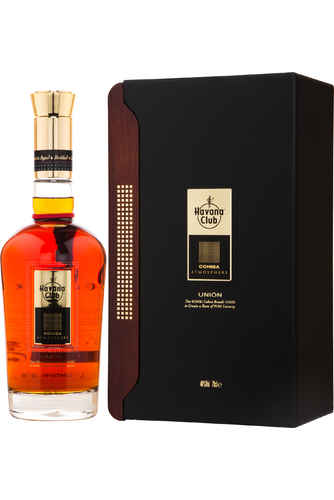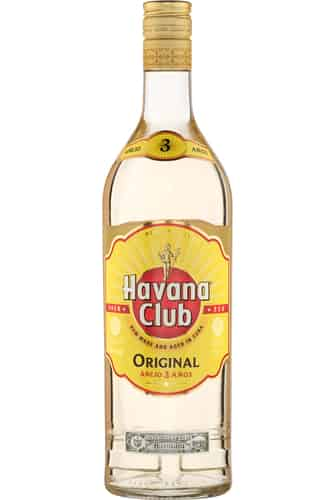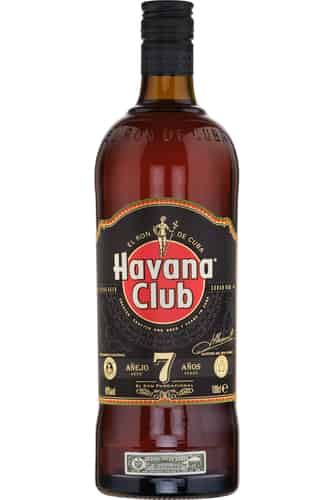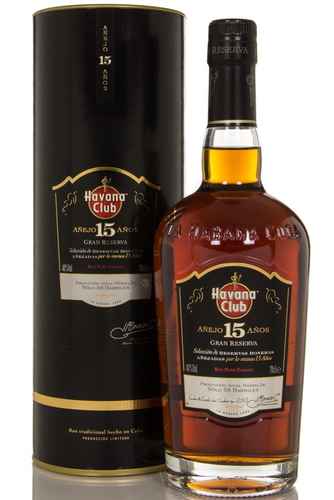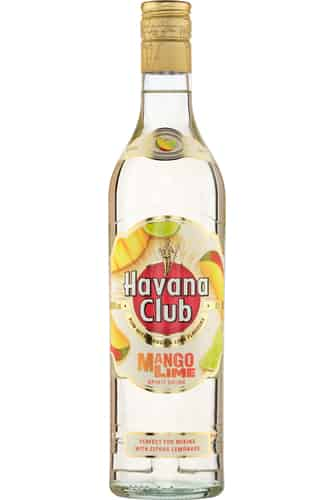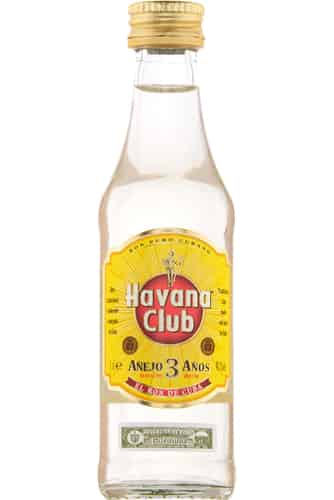Havana Club
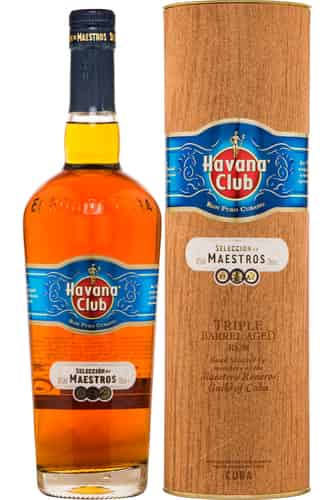
Havana Club Selección de Maestros
70 cl, 45%In stock49.60 €
Havana Club 7 Year Old
70 cl, 40%In stock28.00 €![]()
Havana Club Anejo Especial
70 cl, 40%In stock22.40 €![]()
Havana Club Edición Profesional D
70 cl, 40%In stock44.00 €![]()
Havana Club Anejo Especial (37.5%)
70 cl, 37.5%In stock19.20 €![]()
Havana Club 3 Year Old (3 Liter)
300 cl, 40%In stock76.80 €![]()
Havana Club Verde
70 cl, 35%In stock24.00 €![]()
Havana Club Tributo 2021
70 cl, 40%In stock415.20 €![]()
Havana Club Unión
70 cl, 40%In stock383.20 €![]()
Havana Club 3 Year Old (1 Liter)
100 cl, 40%Out of stock24.00 €![]()
Havana Club 7 Year Old (1 Liter)
100 cl, 40%Out of stock38.40 €![]()
Havana Club 15 Year Old
70 cl, 40%Out of stock143.20 €![]()
Havana Club Mango Lime
70 cl, 30%Out of stock20.80 €![]()
Havana Club 3 Year Old Miniature
5 cl, 40%Out of stock2.40 €
Sorry, we didn't find anything. Please try changing your search criteria.
Havana History
Cuba is one of the great distilling regions of the world, with the perfect climate and fertile soil for growing sugar cane and distilling rum. The island is where many distilleries have made their home, though probably none more famous than Havana Club. Whilst the brand was formed in the 20th century, its short history is a colourful one, and in this small space of time it has grown to be respected as one of the best rums on the market.
Cuban rum is part of the Spanish-style rum distillation tradition, typified by a clean cut and fresh quality, with a good fruity body and usually produced by column distillation. Havana Club is an excellent example of this style, and its cane forward fruity flavours have enamoured bartenders across the world. Particularly, the gold and white Havana Club rums are idea for citrusy summer cocktails, whilst the dark rums make an excellent alternative to whiskies and cognacs for sipping neat.
Noble Prize winning author Ernest Hemingway often spent time in Havana, particularly his favourite bar El Floridita and very much enjoyed the local rum cocktails, creating one of his own- the Hemingway Daiquiri. One night he wrote on the wall of the bar: “My mojito in La Bodeguita, My daiquiri in El Floridita”. If you want to emulate Hemingway, Havana Club is the ideal Cuban rum for making both these fabulous drinks.
It must be noted that due to the American-Cuban embargo, an imitation product is made by Barcardi in Puerto Rico. The Havana Club on sale here is the Cuban brand.
Timeline
-
1878
The Arechabala family founds a distillery in the Cardenas region of Cuba.
-
1934
The Havana Club brand is formed and sold in the US and Cuba, quickly growing in popularity. The 20’s to the 50’s saw a huge explosion in Cuba’s drinking culture, with rich Americans treating the island as a playground, with its cigars, casinos, and (most importantly) its rum enjoying huge popularity. The Havana Club brand was created to capitalise upon this. Yet, for the poorer citizens in Cuba, this prosperity was not shared, particularly for those directly involved in the making of rum, most specifically the sugar cane cutters. This disparity in wealth would come to haunt those at the top of Cuban society.
-
1953-1959
The Cuban revolution starts, culminating in the toppling of the authoritarian government of Batista. At first the Arechabala family supported the rebels, but later changed their view.
-
1960
Once the communist government had been formed, Havana Club was nationalised. The Arechabala family fled to America and Spain. Around the same time Barcardi left the nation and Havana Club became the most popular Cuban rum, both on island and later, across the world.
-
1972
The Cuban government began to sell Havana Club overseas, with a focus on the Soviet Union and the east of Europe. Bottlings depict the weathervane of Havana’s old fort on the logo, something that has continued to feature to this day.
-
1973
The Arechabala family’s trademark for Havana Club in America lapses, allowing the Cuban government to register its own trademark.
-
1977
The Cuban government, seeing the brand as a “national jewel”, establishes another distillery for the production of Havana Club rum in Santa Cruz del Norte.
-
1993
The Havana Club brand is assigned to Pernod Ricard by the Cuban Government.
-
1996
Havana Club 3 Year Old is released and wins a silver medal in the 1996 International Wine and Spirits Competition in London.
-
1994
Barcardi begins to produce rum in Puerto Rico under the name Havana Club, and using a recipe that the Arechabala family had given them, after buying the remainder of rights that the Cuban Government did not own in the US. Meanwhile production of Havana Club was shared between the Cuban government and Pernod Ricard in a 50/50 split.
Over the next few years a court battle raged with both Pernod Ricard placing litigation against Barcardi. Lobbying by Barcardi lead to the creation of t he "Bacardi Act", which safeguarded trademarks connected to nationalised Cuban companies, though this was deemed illegal by the World Trade Organisation in 2001.
-
2012
Pernod Ricard announces they will market Havana Club inside America as “Havanista”, the first Cuban rum to be sold in the country since the revolution.
-
2013 & 2014
Selección de Maestros, a Triple Barrel Aged rum bottled at 45% is released, and wins gold medal in 2013 and 2014 Spirit Masters Awards.
-
2016
After the Embargo had been loosened somewhat, the Cuban government has been granted the trademark for Havana Club within America.


